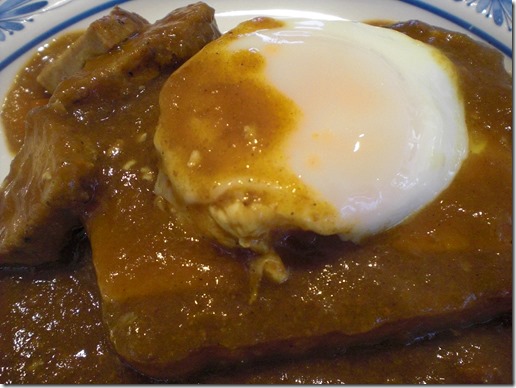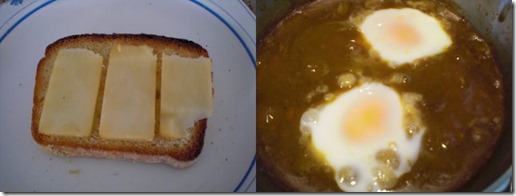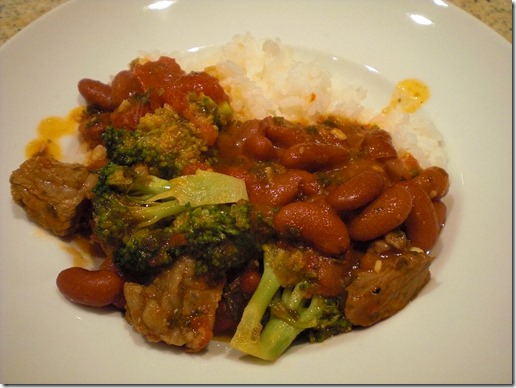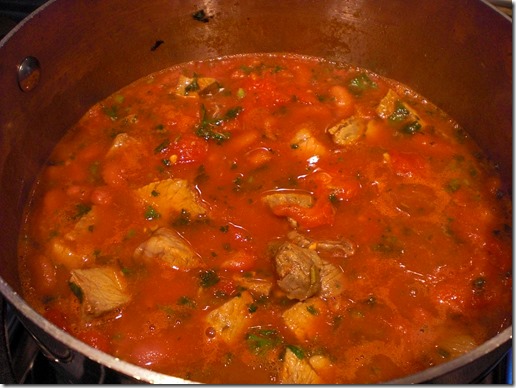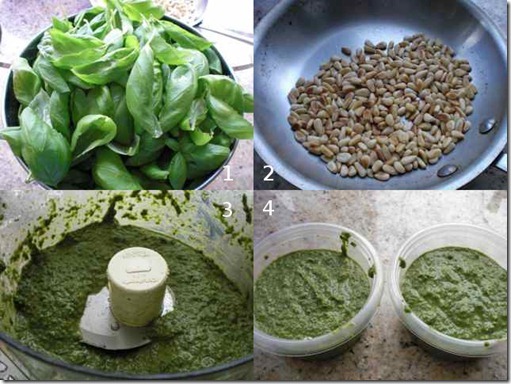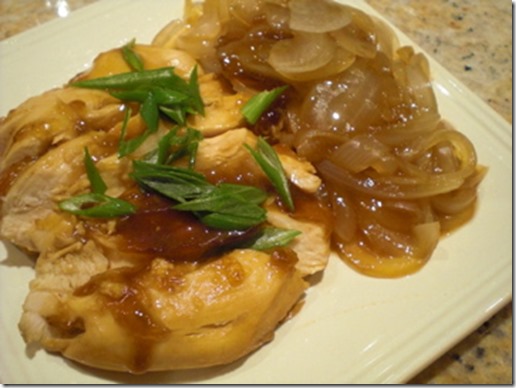
I followed the recipe with very minor modifications (I did not add sugar to the marinade).
Ingredients:
Chicken breast, boneless skinless (one, large)
Salt (1/4 tsp)
Potato starch (1 tsp)
For marinade:
Soy sauce 1 tbs
Mirin 1.5 tbs (original 1 tbs)
Sake (rice wine) 1/2 tbs (original 1 tbs)
Rice vinegar 1 tbs
Soy sauce 1 tbs
(Sugar 1 tbs, I omitted this)
Yuzu koshou 2tsp
For the side:
Onion, sliced, 1 medium
Scallion for garnish
I first removed the tenderloin from the chicken breast. Following the original recipe, I "stabbed" the chicken breast with the tip of my knife to make multiple cuts across the grain of the meat. Then, I flattened it using my meat pounder (with a smooth flat bottom). I placed the marinade and the chicken in a Ziploc bag, massaged, removed as much air as possible and sealed it. I let it marinate at room temperature for 30 minutes.
I placed the chicken breast in a silicon microwave container. sprinkled in the potato starch, poured the marinade over and place on the lid. I microwaved it on high for 2 minutes and checked (it appeared that the sauce was getting thick and I added a small amount of hot water). I flipped the chicken over and microwaved for 1-2 more minutes. (Our microwave is 800KW, and this timing has to be adjusted depending on the wattage of your microwave oven). I let it cool down a bit with the lid on for 10-15 minutes.

Meanwhile I put the sliced onion in a separate silicon microwave container, put the lid on and microwaved it on high for 2 minutes. I then put the cooked onion in the sauce with the chicken.
When the chicken was warm but cooled down enough to handle, I sliced it (The first picture is one small serving which is half of the breast), put the onion on the side and garnished with chopped scallion (green part for color).
I thought this was quite good and had a nice yuzu-citrus favor from yuzu-koshou. It is not spicy at all despite the yuzu-kosho. My wife thought this was on par with my microwave sake steamed chicken. I thought this tasted more interesting. In any case, this is a perfect snack with sake or even wine. Actually we had a cold ginjou 吟醸 sake from Shizuoka 静岡 prefecture called "Wakatake Onigoroshi 若竹鬼ごろし" Devil slayer. This is a slightly sweet gentle sake but has a nice fruitiness and went well with this dish.


 Udon noodle: I used two bundles (2 servings) of dried sanuki udon. As per the package instructions, I boiled them for 13 minutes and rinsed under running cold water and then drained. I used the noodles without cutting them but you may want to cut them into short segments. I put just a dash of dark roasted sesame oil on the noodles and mixed well using my hands to add sesame flavor as well as preventing the noodle from clumping.
Udon noodle: I used two bundles (2 servings) of dried sanuki udon. As per the package instructions, I boiled them for 13 minutes and rinsed under running cold water and then drained. I used the noodles without cutting them but you may want to cut them into short segments. I put just a dash of dark roasted sesame oil on the noodles and mixed well using my hands to add sesame flavor as well as preventing the noodle from clumping.


